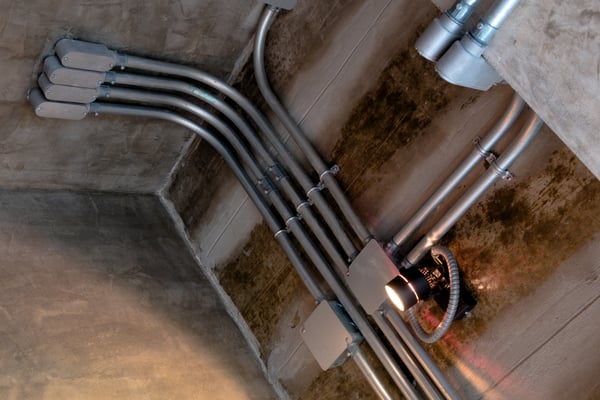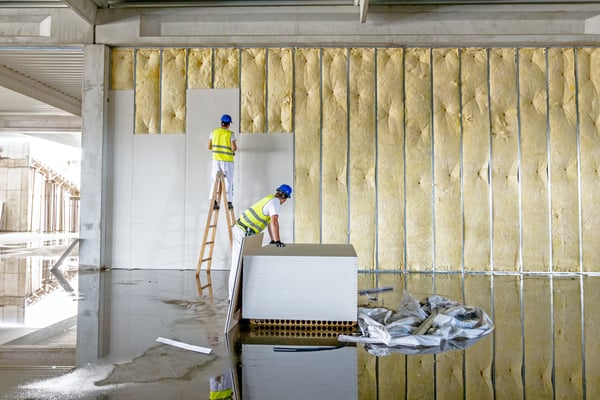Reducing the Cost of MEP Systems in Buildings: 4 Professional Tips
.webp?width=1750&height=276&name=mep%20(1).webp)
Mechanical, electrical and plumbing systems (MEP) are very important in modern buildings, since they create an indoor environment that is suitable for human occupancy over extended periods. However, MEP installations represent a large fraction of construction costs, and they account for over 30% of the budget in many building projects.
Fortunately, there are many ways to reduce the cost of MEP systems without affecting performance. With smart design decisions, it may even be possible to cut costs and improve some aspects of the project at once. Energy and water consumption are also determined in great part by the MEP design, and professional engineering services can save thousands of dollars in utility bills each year.
Get a professional MEP design, reduce installation costs, and save energy and water.
In this article, we will discuss four effective strategies to reduce the cost of MEP installations. As a real estate developer, it is in your best interest to complete construction with little or no change orders. However, there are other ways to reduce costs that are less evident upfront.
Tip #1 - Involve Contractors and Equipment Suppliers from the Start

Many change orders are the result of poor communication. For example, if the dimensions and installation requirements of an equipment piece are assumed incorrectly, expensive changes may be necessary during the construction stage. By getting all parties involved from the start, the design requirements are clear and surprises are avoided.
Clear communication is especially important when using prefabrication and modular construction. In this case, the building is assembled with prefabricated components that are delivered to the site, often with MEP systems built-in. While this construction method is faster, there is less flexibility for modifications once the modules have been completed.
Technology can simplify coordination among the parties involved in a building project. For example, modern design software allows simultaneous work on the same building model, and clashes among components can be detected and notified immediately. There are also project management platforms to complement design software, which include useful features such as cloud-based file sharing.
Tip #2 - Optimize the Layout of MEP Installations

MEP installations have many components, but those using the most space are often hidden from sight. For example, a typical commercial building will have thousands of feet of conduit, piping and air ducts concealed behind walls and ceilings. With conventional 2D design software, finding an efficient layout for all these systems is challenging, even for experienced engineers. However, when design is taken to a 3D environment like Revit, the layout of MEP systems can be optimized more easily.
An inefficient MEP layout causes two types of expenses: more materials and more skilled labor. With every foot or conduit, piping or ductwork that is eliminated from the design, the project becomes less expensive.
Getting contractors and providers involved from the start (Tip #1) helps towards this goal. When the locations, dimensions and installation requirements of MEP components are known clearly, architects and design engineers can focus on finding the optimal layout. On the other hand, finding an efficient MEP layout is more difficult when information is provided gradually and the design is modified many times.
Tip #3 - Improve the Building Envelope to Reduce HVAC Workloads

Boilers, chillers and other types of large HVAC equipment are among the most expensive MEP components in building projects. However, the price of these units is determined in great part by their nameplate capacity. There is a common misconception that having oversized equipment is a good thing, but actually you are spending more than necessary. In addition, oversizing makes maintenance more expensive.
When a building has an efficient thermal envelope, it conserves indoor heat more effectively during winter, while blocking outdoor heat during summer. Compared with a building that has the minimum insulation required by code, this building can keep a comfortable temperature with less heating and cooling. HVAC equipment can be sized smaller as a result, reducing upfront costs.
Tip #4 - Plan the Project Carefully and with Anticipation

Lack of planning can make a project more expensive, even if you have a professional design and an experienced contractor.
- For example, if there is plenty of construction activity when you start the project, you may be slowed down by a shortage of skilled labor.
- You may be forced to pay overtime if there is a tight deadline to meet, making the project more expensive.
- On the other hand, if peaks in construction activity are anticipated, your contractor can increase the project staff in advance.
There are also seasonal factors that you should consider when planning the project. For example, if you plan to install an air conditioning system just before the summer months, HVAC installers may be busy with projects in multiple buildings.
With adequate planning, you can prepare for material and skilled labor shortages. If these factors are not considered in advance, they can make your project more expensive while delaying completion.

Michael Tobias
Michael Tobias, the Founding Principal of NY Engineers, currently leads a team of 150+ MEP/FP engineers and has led over 4,000 projects in the US
Join 15,000+ Fellow Architects and Contractors
Get expert engineering tips straight to your inbox. Subscribe to the NY Engineers Blog below.

